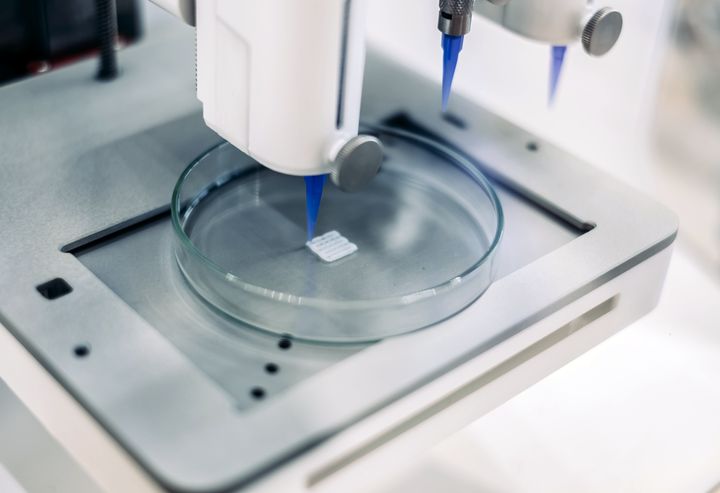
An intriguing piece in The Conversation provokes some thinking into the future regulatory environment that might face bioprinting.
Bioprinting is indeed a form of 3D printing, but in a separate realm from the more typical part production seen in factories and desktops. Bioprinting involves producing some form of living tissue that ultimately could be implanted into a person or other living creature.
The most typical form of bioprinting involves printing a solid “scaffold” structure, and depositing independent living cells upon it. The cells multiply and eventually take on the form of the scaffold, while the scaffold itself gradually dissolves, leaving only living tissue.
There are plenty of challenges in bioprinting, not the least of which is that complex biostructures such as organs are made of many, many different types of cells, while bioprinters tend to deposit only one or two types at a time.
Another challenge is thickness. A thin bioprint’s cells can obtain nutrients simply by absorbing them from nearby solutions. However, a “thick” bioprint may not be able to access nutrients as they cannot soak through the print to centrally-located cells. This requires printing of vascular structures to create a flow of nutrients, and that’s been tricky to develop.
But eventually such challenges will be overcome and industry will be able to 3D print increasingly complex biostructures, perhaps even whole human organs. These, in theory, could be used for transplants into patients requiring them.
In my opinion, that’s going to take quite a few years to happen. But eventually it likely will simply because of the effort being made to achieve that goal.
Bioprinting Regulations
The issue brought forward by The Conversation’s Dinusha Mendis and Ana Santos Rutschman is to do with how such complex biostructures will be regulated. The answer is not obvious at all, as a living biostructure intended for implantation in a person is very clearly quite different from a 3D printed aircraft part.
While lives are at stake in both situations, implantation already has a significant regulatory environment. For example, any drugs or medical devices being implanted into a human must pass safety guidelines. In the USA, this would be the Food & Drug Administration (FDA).
That makes a great deal of sense for, say, a 3D printed titanium replacement kneecap, but what about a living organ, like a heart or kidney?
The situation gets more complex when you attempt to classify the 3D printed organ. Is it a “part”, like the titanium kneecap, or is it more like an organ that’s being transplanted from human to human? In the latter case there are already a series of regulations and practices. Should they be used for the 3D printed organ?
Another consideration might be the origin of the 3D printed organ’s design. Is it a truly “new, made from scratch” design, or is it a copy of an actual human organ? Or is it merely inspired by a particular human’s organ?
Who is the legal designer / owner of the 3D printed organ? Does a human from which the organ was derived deserve some recognition?
The Conversation says “regulations are not ready”, and I think they are correct.
Regardless of the classification, a 3D printed organ design would certainly be re-printed many times, making many copies of the original design. There could even be modifications to the original design, creating derivative organs with slightly improved properties.
If this is beginning to sound like a software development scenario, that’s exactly what it is. It may be that the regulations could eventually echo current practices in software development.
If humans are software, what does that make of 3D printers?
Via The Conversation
